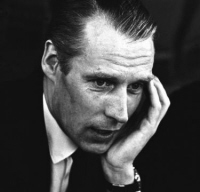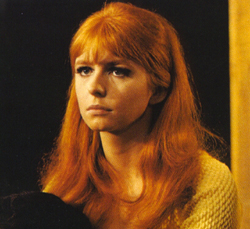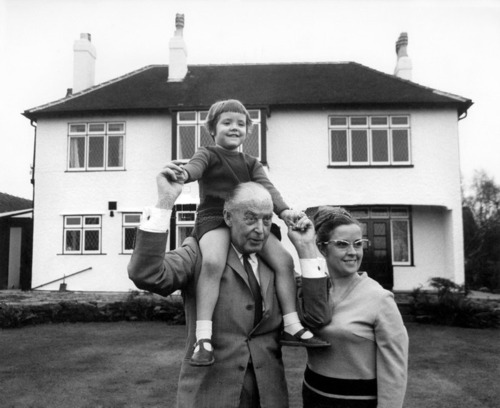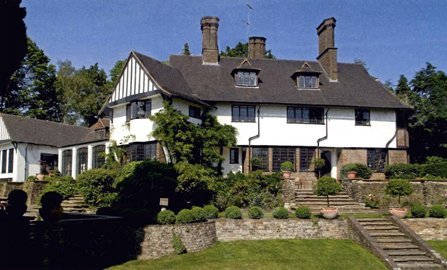Lyrics
“We Can Work It Out”
Try to see it my way,
Do i have to keep on talking till i can’t go on?
While you see it your way,
Run the risk of knowing that our love may soon be gone.
We can work it out,
We can work it out.
Think of what you’re saying.
You can get it wrong and still you think that it’s alright.
Think of what i’m saying,
We can work it out and get it straight, or say good night.
We can work it out,
We can work it out.
Life is very short, and there’s no time
For fussing and fighting, my friend.
I have always thought that it’s a crime,
So i will ask you once again.
Try to see it my way,
Only time will tell if i am right or i am wrong.
While you see it your way
There’s a chance that we may fall apart before too long.
We can work it out,
We can work it out.
Life is very short, and there’s no time
For fussing and fighting, my friend.
I have always thought that it’s a crime,
So i will ask you once again.
Try to see it my way,
Only time will tell if i am right or i am wrong.
While you see it your way
There’s a chance that we may fall apart before too long.
We can work it out,
We can work it out.
Song History ans Facts:
Written by: Paul McCartney (50%), John Lennon (50%) (credited as Lennon-McCartney)
Recorded: October 20, 1965; October 29, 1965 (Studio 2, Abbey Road Studios, London, England)
Mixed: October 28, 1965; October 29, 1965; November 10, 1965; November 10, 1966
Length: 2:10
Takes: 2
Musicians: John Lennon: harmony vocals, acoustic guitar (Epiphone FT-79 “Texan”), harmonium
Paul McCartney: lead vocals, bass guitar (1961 Hofner 500/1)
George Harrison: rhythm guitar (Gibson J160E)
Ringo Starr: drums (Ludwig), tambourine
First released: December 3, 1965 (UK: Parlophone R5389), December 6, 1965 (US: Capitol 5555) (double a-side with “Day Tripper”)
Available on: (CDs in bold)
- Yesterday and Today, (US: Capitol (S)T 2553)
- The Beatles 1962-1966, (UK: Apple PCSP 717, US: Apple SKBO 3403, Apple CDP 0777 7 97036 2 3)
- Past Masters Volume Two, (Parlophone CDP 7 90044 2)
- The Beatles 1, (Apple CDP 7243 5 299702 2)
Highest chart position: 1 (US: three weeks beginning December 16, 1965), 1 (UK: five weeks beginning January 28, 1966)
- Begun by Paul sometime in September 1965, the lyrics to this song were a direct plea to girlfriend Jane Asher; when the song was shown to John, he added the middle eight (“Life is very short, and there’s no time…”). For his part, George suggested that the couplets in the middle eight suddenly end in a waltz or 3/4 time, marking the first time any Beatles song had switched time signatures in mid-record.
- The song was important in Beatles history for other reasons, as well: it was the first song released (through not the first recorded) from the historic Rubber Soul sessions, and John’s one-note harmonium (a reed organ powered by air pumped through foot pedals) created a pre-psychedelic drone that the group would revisit time and time again.
- This single also claims the distinction of being the first “double a-side” single in rock history. 45 rpm records usually featured the potential hit on the a-side, but John argued that “Day Tripper” — his idea, again fleshed out by both he and McCartney — was the song with the most hit potential. The compromise reached meant that there was no designated “b” side, and both songs were counted as Number One singles. (When listing Beatles singles, most discographies put “We Can Work It Out” as the designated a-side, but only because it’s billed first on the 45 sleeve.)
- Although most of this song was completed in one day (February 20, 1965), Paul added a vocal doubletrack nine days later.
- There are two different stereo mixes for the song, created exactly one year apart; one by Capitol for inclusion on the “Yesterday and Today” compilation and one by Parlophone in 1966 for the UK-only compilation “A Collection of Beatles Oldies.”
Live versions: December 3, 1965 (Odeon Cinema, Glasgow, Scotland), December 4, 1965 (City Hall, Newcastle, England), December 5, 1965 (Empire Theatre, Liverpool, England), December 7, 1965 (Apollo Cinema, Ardwick, Manchester, England), December 8, 1965 (City Hall, Sheffield, England), December 9, 1965 (Odeon Cinema, Birmingham, England), December 10, 1965 (Odeon Cinema, Hammersmith, England), December 11, 1965 (Astoria Cinema, Finsbury Park, England), December 12, 1965 (Capitol Cinema, Cardiff, England)
Trivia:
- In America, the “We Can Work It Out / Day Tripper” single was released on the same day as the Rubber Soul album, although neither song was ever present on that album.
- A short film of the Beatles lip-synching this song was made for promotional purposes and first broadcast, along with a similar lip-synch clip for “Day Tripper,” on the Granada Television special “The Music Of Lennon and McCartney,” which first aired December 17, 1965 in the UK. Since these performances were not filmed in front of an audience, they can be considered the world’s first music videos as we understand the format today.
Covered by: Big Youth, Brass Construction, Maxine Brown, Petula Clark, Coffin Break, Judy Collins, Deep Purple, The Four Seasons, Tom Jones, Chaka Khan, King Missile, Johnny Mathis, Melanie, R. Stevie Moore, Heather Nova, Plain White Ts, Valerie Simpson, The Spiders, Steel Pulse, Tesla, Rick Wakeman, Dionne Warwick, Stevie Wonder
While The Beatles were recording their late 1965 masterpiece album “Rubber Soul,” the usual concern was what song would be left off of the album and released as their next single. Three days into recording the album, the Lennon/McCartney rocker “Day Tripper” was recorded which, to their ears, must be earmarked as their next million-selling hit song. The issue appeared to be settled and they went on with recording the rest of the album. —– —- —– —- —- —- —- —- —- —-
However, two sessions later, another composition from the pen of John and Paul seemed to fit the bill as well. “We Can Work It Out” was that song, which the group spent nearly eleven hours (within two recording sessions) to perfect. Since it seemed to be a more “commercial” track, it looked as if it would overtake “Day Tripper” as the next single release by the group.
Then the pendulum swung back again. “After a lot of talk, we decided ‘Day Tripper’ is really the top track. This is what I had wanted all along,” George Harrison explained at the time. John also began to object and insist that “Day Tripper” be the song to represent their current sound, undoubtedly because of its heavier feel and the encrypted lyrics. Having reached a stalemate, a compromise appeared to be in order – one that set a new precedent in the British record business. Both songs would be released on the same single, but not with the usual A-side and B-side.
 George Martin explained at the time: “After we gave both titles to EMI, the boys decided that they preferred ‘Day Tripper,’ but both sides are extremely good and worth a lot of plays. As far as EMI’s official policy is concerned, there is no A-side, and both will be promoted equally.”
George Martin explained at the time: “After we gave both titles to EMI, the boys decided that they preferred ‘Day Tripper,’ but both sides are extremely good and worth a lot of plays. As far as EMI’s official policy is concerned, there is no A-side, and both will be promoted equally.”
So as far as Britain was concerned, both sides of the new Beatles single were equally hits and the record predictably peaked in the #1 spot. However, since in the US their policy was to chart each side of a single individually if they both gained popularity, the race was on to see which side of the new Beatles single would beat out the other. As it turned out, “Day Tripper” peaked at #5 on the Billboard charts while the more “commercial” track, “We Can Work It Out,” made it all the way to #1 and stayed there for three weeks. ——————————————————————————————————————————————————–

Jane Asher and Paul McCartney
|
Songwriting History
Not surprisingly, the initial writing of the song was by Paul, one of a trio of compositions inspired by his then turbulent relationship with girlfriend Jane Asher (“I’m Looking Through You” and “You Won’t See Me” being the other two). “The lyrics might have been personal,” Paul recollects. “It is often a good way to talk to someone or to work your own thoughts out. It saves you going to a psychiatrist, you allow yourself to say what you might not say in person.”
 The problem stemmed from Jane determined to continue pursuing an acting career, something she began well before ever meeting Paul. She decided to join the Bristol Old Vic Company in October of 1965, which meant that she moved from her home town of London (where she lived with Paul in her family home) to the west of England. Not being content just to be a girlfriend of a Beatle, an opportunity that most female fans would give their right arm for, this caused a good degree of insecurity in Paul who, with his group, just began work on the “Rubber Soul” album.
The problem stemmed from Jane determined to continue pursuing an acting career, something she began well before ever meeting Paul. She decided to join the Bristol Old Vic Company in October of 1965, which meant that she moved from her home town of London (where she lived with Paul in her family home) to the west of England. Not being content just to be a girlfriend of a Beatle, an opportunity that most female fans would give their right arm for, this caused a good degree of insecurity in Paul who, with his group, just began work on the “Rubber Soul” album.
Whereas the other two songs written at this time expressed much bitterness (“I have had enough, so act your age” from “You Won’t See Me” and “I thought I knew you, what did I know” from “I’m Looking Through You”), Paul here expresses confidence that they can “work it out.” However, because of possibly not being used to any indifference in past romance, his lyrics are written as absolute testimony that his opinion is the correct one and hers is the wrong one.
 The beginning germs of the song were conceived at Rembrandt, which was a house Paul purchased for this father in July of 1964 in Heswall, Cheshire. According to Barry Miles in his official McCartney biography “Many Years From Now,” this five-bedroom home “was a large mock-Tudor house with a decent-size garden in a leafy suburb about 15 miles from Liverpool.” As to the actual writing of the song, the book continues: “There was a piano in the dining room where Paul often tinkered with new tunes. If he was composing on the guitar, however, he would usually go to the back bedroom to get away from everyone.” Since Paul recorded a demo of the song on acoustic guitar, we can rightly assume it was written in the back bedroom of the house (for those of you who need to know every detail).
The beginning germs of the song were conceived at Rembrandt, which was a house Paul purchased for this father in July of 1964 in Heswall, Cheshire. According to Barry Miles in his official McCartney biography “Many Years From Now,” this five-bedroom home “was a large mock-Tudor house with a decent-size garden in a leafy suburb about 15 miles from Liverpool.” As to the actual writing of the song, the book continues: “There was a piano in the dining room where Paul often tinkered with new tunes. If he was composing on the guitar, however, he would usually go to the back bedroom to get away from everyone.” Since Paul recorded a demo of the song on acoustic guitar, we can rightly assume it was written in the back bedroom of the house (for those of you who need to know every detail).
This is not to say that Paul wrote the entire song. When asked in 1972 by Hit Parader magazine who wrote the song, John commented “Paul, but the middle was mine.” Paul corroborates and also embellishes this: “I wrote it as a more up-tempo thing, country and western. I had the idea, the title, had a couple of verses and the basic idea for it, then I took it to John to finish it off and we wrote the middle together. Which is nice: ‘Life is very short. There’s no time for fussing and fighting, my friend.”
“Paul’s first half, my middle eight,” John explained in Playboy magazine in 1980. “He came to my house with the first bit and I came up with (singing) ‘Life is very short, and there’s no time for fussing and fighting my friend.’  You’ve got Paul’s writing ‘We can work it out,’ real optimistic, you know, and me, impatient, ‘Life is very short…’” So, since Jane left London in October of 1965 and the song was recorded the same month, the song must have been fully written during this month, Paul’s initial contribution at his father’s home in Cheshire and his finishing collaboration with John at his Kenwoodhome in Weybridge. ———————————————–
You’ve got Paul’s writing ‘We can work it out,’ real optimistic, you know, and me, impatient, ‘Life is very short…’” So, since Jane left London in October of 1965 and the song was recorded the same month, the song must have been fully written during this month, Paul’s initial contribution at his father’s home in Cheshire and his finishing collaboration with John at his Kenwoodhome in Weybridge. ———————————————–
Capitol Records released it as a double A-sided record; and on December 12th, 1965 it entered Billboard’s Hot Top 100 chart…
“We Can Work It Out” peaked at #1 (for 2 weeks) on January 2nd, 1966 and spent 12 weeks on the Top 100, while “Day Tripper” reached #5 (for 1 week) on January 16th and stayed on the chart for 10 weeks…
“We Can Work It Out” also peaked at #1 in the U.K., Ireland, & Canada, and in 1971 Stevie Wonder’s covered version reached #3 on Billboard’s R&B Singles chart and #13 on the Top 100…
R.I.P. John and George.
